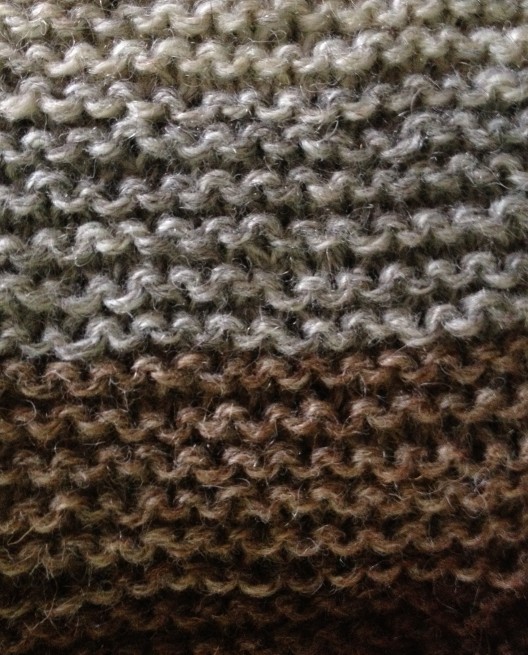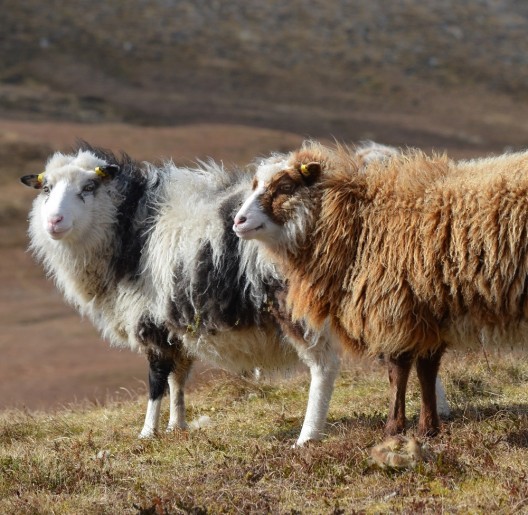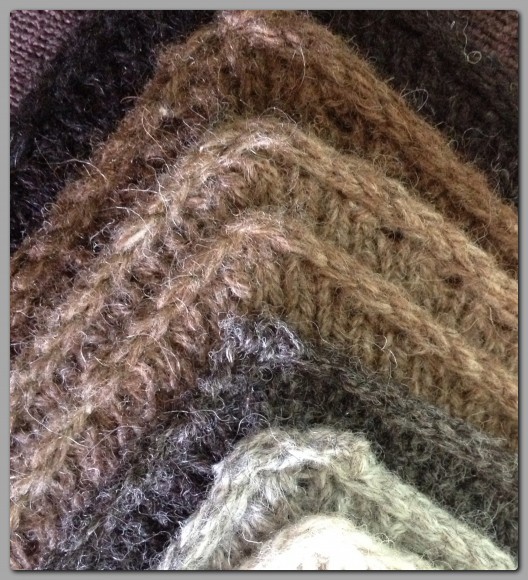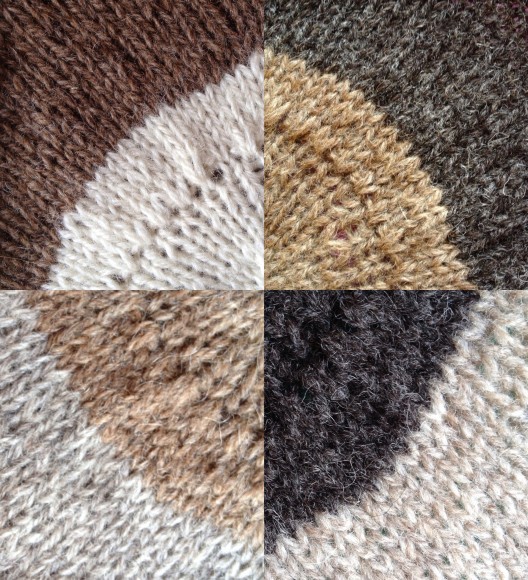During my search for great British yarn to knit with this year I have had some wonderful recommendations.
Imagine my surprise and delight when I was recommended a wool which comes from a very local source.
If you are a fan of Shetland wool *from* Shetland you are no doubt aware of Jamieson & Smith and Jamiesons of Shetland (Often confused as the same company, which they are not) and you might also have heard of Shetland Organics CIC.
As a local and a knitter I felt I should have kicked myself for not knowing about Foula Wool.
For anyone not familiar with the island of Foula, it is home to a population of around 30 people and has a breathtaking landscape. The island lies off the west coast of Shetland and is accessible only by sea or air.
The island is maybe best known for being the setting of Michael Powell’s film The Edge of the World (It is astonishing enough that a tiny, 5 sq mile island off the west coast of Shetland should be chosen as a filming location but the fact that it was made 76 years ago is a bit of a marvel to me. See it, if you can!) and although I have never yet been, it has always held a bit of mysticism for me! Probably because I usually see her lovely sharp peaks slicing through the shrouded mist, or glistening in hazy sea sunshine!

I was thrilled to hear of a yarn company on Foula and I quickly found the website and ordered up a few yarn cakes to play around with. Seven lovely, natural, Shetland sheepy shades, springy, soft and flecked with the natural variations in colour, the wool comes in DK weights from 25g – 100g.
Immediately, the thing which struck me about the website was their fresh outlook on traditional Shetland wool. Not only is the site bright and unfussy to navigate, there is a lot of information about the traditions of Shetland colour knitting and a really interesting background into the Foula sheep and the characteristics of the wool.

I really wanted to find out more about the company and how the sheep from the island differ from other Shetland sheep – Magnus and Justyna were very kind in obliging.
What was the driving force in starting the business?
The idea to start the business came from a concern for the sustainability of keeping Foula sheep out on Foula. Over the years the islanders on Foula have managed to preserve a quite unique Shetland sheep gene pool and we want to make sure we are doing our bit to keep this going.
If we allow the island population of sheep to drop below a certain level then it is inevitable that a portion of that genetic resource will be lost. We are hoping that if the Foula Wool yarn business is successful it will help to encourage people in keeping the Foula sheep going.
Tell us about the Foula Sheep, what makes them different?
The Foula sheep are an un-modernised strain of the Shetland sheep breed that have been raised on Britain’s most isolated inhabited island, without any pressure from cross breeding or flock book standards. This has produced an animal that retains all of its natural survival instincts and is endowed with an abundant variety of colours and markings.
A flock of Foula sheep is about as far removed as it is possible to get from the classic image of docile white sheep grazing peacefully on a flat green field. I like to think of them as Viking sheep, a bit windswept and interesting.

Does the fleece come from the whole community or specific crofts?
At the moment we buy fleeces from a number of the crofts on Foula, but we do hope to be able to offer everyone on the island who keeps sheep an outlet for their fleeces that will be better able to reflect the value of their own efforts in keeping and raising Foula sheep.
Do you choose/sort the fleeces yourselves?
Yes, we do all of that ourselves here on Foula. One thing my father taught me was never send a poor quality fleece out to the wool broker – one bad fleece will drag down the price of the whole batch. Thankfully, this means he passed on a lot of knowledge about how to pick out the good fleeces. It comes down to how the fleece behaves when you start to interact with it. The more fleeces you handle then the easier it gets to spot the differences in quality.
Are there any drawbacks to running a business from such a remote location?
I suppose you could say that the difficulty in posting the orders out might be a drawback. The island can get cut off with no ferry or plane for days at a time when bad weather restricts these services. However, in a funny kind of way I think this might actually add to the whole appeal of the Foula Wool experience. Our customers have all seemed to be very understanding so far anyway.
Do you plan to add different weights of yarn along with the DK?
Yes, I think this is something that we will be trying to do, we have not made a decision yet about whether to try a lighter or heavier yarn next. We would love to get any feedback from people about what they would like from us.
Finally, describe your wool in 5 words
Soft, sturdy, plenty of character!
Thanks so much to Magnus and Justyna for “visting” KnitBritish. I really admire their ethos – it is brilliant that they are striving to preserve the native flocks and have a great knowledge about wool. As a result of maintaining a unique strain of the breed, they are bringing us a unique yarn.
I have been working on a little project, which is currently blocking, and I really found the Foula yarn much different in feel and character from other Shetland yarn. It is plump and stout ply and much softer as you may think. Shetland yarn has a great stitch definition and that is so evident in the Foula yarn.

I really like that they have chosen to produce a DK – it is not a very usual weight in Shetland wool (and I mean Shetland wool *from* Shetland, which traditionally tends towards jumper weight or lace) but it is certainly a popular one with knitters.
Foula Wool really seem to have their fingers on the pulse when it comes to we discerning knitters – a great philosophy and aims for the local crofting community; a fantastic product; a great website featuring the wool shop AND a smorgasbord of information from land to sheep to wool to knitted fabric!
It isn’t just me that is raving about them either- Tom of Holland has been tweeting and blogging with some delicious Fair isle swatches in this yarn and about a future cardigan project.
I will blog soon about my make, which heavily features wool from Foula…

In the meantime, head on over to their website and have a look at their range – from cakes to hanks, in meterage which will suit small-project knitters to the more adventurous projects! A thoroughly pleasing yarn to work with and see knitted up and a truly local wool!


Oh, this looks lovely! I’ve never been to Foula but it’s always held something of an appeal to me too – there’s something about (almost)inaccessible islands that pulls me in…
The yarn looks gorgeous too. Huzzah for local producers! Thanks for an interesting post.
Anna
[…] also massively wonderful…truly local wonderfulness! You can read more about Foula Wool in a previous blog. There is also a lovely short film of the Foula sheep being hand […]
More Shetland! There can never be enough! I love spinning and knitting with it and have tried it carded and combed. Foula looks beautiful, as do the sheep. Love the colour swatches, it shows the lovely speckles. Looks wonderful!
Lynn
[…] lovely to see Foula Wool‘s Magnus there – he was girding himself for the onslaught of Tea Jenny […]
thanks for your info Iam so grateful to have you tell me where and how it looks so I can knit fair isle projects with this yarn my question what ply or thickness can i get for hats mittens and scarves?? k
If you go to the Foula wool website (link in Louise’s website above) you can click on the “patterns and kits” section. Here you can find links to patterns for this yarn, available for download on ravelry.
Have only just found KnitBritish and am working my way through the blogs. Found this one about Magnus’s great Foula yarn and thought you should know of another ‘Shetland’ yarn, – handspun yarns by Shetland Handspun.
Wonderful to see Foula wool from Foula sheep – my only visit to Foula in 1992 – I went for the experience of getting there by ferry and stayed at the B & B, where wet woollen socks dried on the Rayburn overnight. Little did I know then that my closer experience with wool would come in the years ahead, through my daughter taking up a link in the processing of wool through her weaving business. Thanks to Laura, of Laura’s Loom, for keeping my memories of Foula and that time I spent on Shetland in touch with British Wool.
[…] cannot believe it is almost five years since I interviewed Magnus Holbourn, from Foula Wool, about their new business. I had fallen in love with their natural shades of DK; plumpy, sheepy, […]